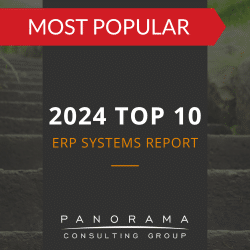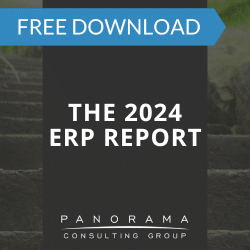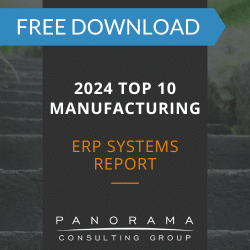Launching a process improvement initiative is a smart move if you’re tired of the same old complaints from the same old employees. Simply changing the steps your employees follow to accomplish tasks can bring you the peace and quiet you’ve dreamed of – but more importantly, it can save your organization money.
Today, we’re exploring six hypothetical examples of process optimization initiatives and detailing how the organization realized cost savings as a result of these improvements. These examples demonstrate the tangible benefits of process improvement and digital transformation in a variety of industries.
6 Examples of Impactful Process Improvement Initiatives
1. Streamlining the Bill of Materials Process
A food & beverage manufacturer streamlines its bill of materials (BOM) process. By optimizing this process, it realizes several specific cost-saving benefits:
- Reduced amount of inventory needed to meet demand. With an optimized BOM process, the company can accurately forecast the amount of raw materials, ingredients, and packaging needed for production. This prevents over-ordering and excess inventory, which results in lower inventory carrying costs, reduced storage costs, and improved cash flow.
- Reduced amount of waste generated during production. With a streamlined BOM process, the company can ensure that the correct quantities of each raw material and ingredient are ordered and used in production. This reduces the amount of waste generated due to overproduction, expired materials, or misused ingredients, resulting in lower costs and improved sustainability.
- Improved efficiency of manufacturing operations. With a clear and accurate bill of materials, the company streamlines the production process and reduces the time required to produce finished products. This results in lower labor costs and increased productivity.
- Improved product identification. With optimized processes, the company can implement a robust BOM software solution. This solution helps the company maintain accurate product history and reduce the overhead of managing raw parts. In addition, the procurement team becomes more confident of purchase order accuracy.
The 2024 Top 10 ERP Systems Report
What vendors are considering for your ERP implementation? This list is a helpful starting point.
2. Streamlining Sales and Marketing Processes
A clothing retailer optimizes its sales and marketing processes. This leads to cost savings via the following benefits:
- Increased accuracy and effectiveness of marketing campaigns. By analyzing customer data and segmenting its audience, the company can create more targeted and effective campaigns. This reduces the costs associated with reaching prospects who are less likely to convert.
- Optimized inventory management. With an optimized sales process, the company can accurately forecast demand and reduce the amount of unsold inventory. This results in lower storage costs, less waste, and increased profitability.
- Increased customer engagement and loyalty. With a more personalized approach, the company creates a better customer experience and increases customer satisfaction. This leads to more repeat business and higher customer lifetime value.
3. Improving Supply Chain Management
A construction company improves its supply chain management operations and achieves the following cost-saving benefits:
- Reduced raw material waste. By tracking inventory levels and optimizing the ordering process, the company can avoid over-ordering materials. Additionally, by working with suppliers who offer just-in-time delivery, the company can reduce the amount of inventory it needs to store, which results in lower storage costs.
- Increased collaboration among stakeholders. With increased supply chain visibility, the company improves communication between the design team, construction team, and suppliers. This helps the company avoid delays and minimizes the risk of errors. Additionally, the company experiences faster project completion times, reduced labor costs, and improved project profitability.
- Reduced risk of project delays and associated costs. By accurately forecasting demand and strategically managing supplier relationships, the company can stay ahead of material shortages and reduce the risk of schedule delays. This helps the company avoid costly penalties for missed deadlines.
- Improved scheduling and decreased cycle time on equipment maintenance. Through supply chain improvements, the company reduces the downtime of equipment and is able to identify the resource skills needed on any repair/preventative maintenance.
- Consistent on-time completion of projects. By improving its processes, the company can implement a modern supply chain management system. This allows it to coordinate raw material deliveries, resource delays, and product attributes. As a result, the company consistently completes projects on time, which reduces fines, waste, and overtime. Ultimately, the company improves its customer service level.
4. Standardizing Work Procedures
A professional services firm standardizes its work procedures. This leads to cost savings via the following benefits:
- Improved productivity and efficiency. By establishing clear and consistent processes, the company minimizes the need for repetitive and redundant work. This enables its employees to focus on high-value activities, which leads to lower labor costs.
- Fewer errors and less rework. By ensuring that all team members follow the same processes and procedures, the company minimizes the risk of errors. It also reduces the time and resources required to correct mistakes and address client issues. This results in lower labor costs and improved client satisfaction.
- Increased consistency and quality of services. By delivering high-quality services that meet and exceed client expectations, the company increases client retention rates and generates more revenue.
5. Implementing a Continuous Improvement Program
A government entity builds a culture of continuous improvement where all employees are encouraged to adopt an innovative mindset. The organization realizes several specific cost-saving benefits:
- Less need for rework. By implementing quality control processes and addressing the root causes of errors, the organization minimizes the amount of time and resources needed to fix problems. This results in faster service delivery and reduced costs associated with corrective actions.
- Improved resource utilization. By analyzing work processes and identifying opportunities for optimization, the organization can make more effective use of staff resources, while reducing overtime costs.
- Reduced waste. By identifying areas of waste and implementing changes to eliminate it, the organization can allocate resources towards more critical areas.
6. Applying Lean Principles to Manufacturing
A medical device manufacturer uses Lean principles to improve its processes and achieves the following cost-saving benefits:
- Improved product quality. By implementing error-proofing techniques and continuously monitoring processes, the company minimizes the amount of rework required and maximizes product yields. This reduces the costs associated with scrap, rework, and warranty claims.
- Less space required for manufacturing processes. By implementing a “just-in-time” inventory system and reducing batch sizes, the company minimizes the amount of inventory it needs to have on hand. This frees up valuable floor space and lowers overhead costs.
- Faster time-to-market. The company shortens lead times and improves product throughput. This results in faster time-to-market.
- Reduced inventory costs. With reduced inventory, the company can reduce its space requirements as well as the amount of cash tied up in its inventory (which might otherwise be a depreciating asset).
- Improved cash position. The company reduces cycle times and addresses safety stock positions. This frees up cash for growth and other initiatives.
Rock the Boat to Save Some Dough
Inefficient processes are more than an annoyance – they are a drain on resources and your bottom line.
You’ll miss out on many cost savings opportunities if you stick with the status quo. That’s why we assist clients with business process management and business process reengineering. You simply can’t reach your potential when you have inefficiencies.
While the examples above are hypothetical, the benefits of a process improvement initiative are very real, especially when you concurrently implement an ERP system that aligns with your organizational goals.
Contact our business process reengineering consultants below to learn how to start rocking the boat, aggravating employees with change, and then saying, “I told you so,” when employees realize the boat rocking made their lives on deck easier.














